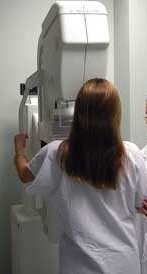Diagnostic accuracy varies by radiologst
For women with breast symptoms such as lumps, the ability of diagnostic mammograms to detect breast cancer accurately depends strongly on which radiologist reads them, according to a Group Health study published online Dec. 11 in the Journal of the National Cancer Institute.

"When a woman gets a mammogram, she wants to know that if she has breast cancer, the mammogram will be likely to detect it," said study leader Diana Miglioretti, PhD, an associate investigator at Group Health Center for Health Studies. "This is especially important when the woman has a breast concern such as a lump."
Ideally, this ability to accurately detect cancer (known as sensitivity) would be consistently high, with few false-positives — biopsies performed despite the absence of cancer. And it wouldn't depend on which radiologist was reading the mammograms.
But in a study of 123 radiologists at 72 U.S. facilities, including six at Group Health, that's not what the Group Health researchers found. The team examined how well the radiologists interpreted nearly 36,000 diagnostic mammograms done to evaluate breast problems, such as lumps, from 1996 through 2003.
For different radiologists, sensitivity ranged from 27 percent to 100 percent and false-positives from 0 to 16 percent. These differences were only partially explained by the characteristics of the patients and the experience of the radiologists.
The radiologists who read diagnostic mammograms most accurately (with highest sensitivity, without too many false-positives) tended to be those who were based at academic medical centers or spent at least 20 percent of their time on breast imaging. (By contrast, unlike in Europe, most U.S. women get mammograms interpreted by general radiologists.)
"We need to reduce the wide variability among radiologists in how they interpret diagnostic — and screening — mammograms," said Miglioretti. "A good way to do that may be to identify the radiologists who are least accurate at reading mammograms — and to improve their performance with extra training."
11.01.2008
More on the subject:










